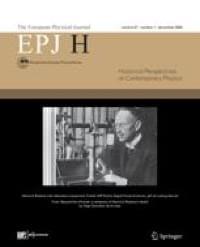Nov 23, 2023
Unraveling the Mysteries of ϕ Mesons: A New Breakthrough in Heavy-Ion Collision Physics
Posted by Saúl Morales Rodriguéz in categories: innovation, particle physics
A team of researchers headed by Prof. Wang Qun at the University of Science and Technology of China, under the Chinese Academy of Sciences, has achieved a breakthrough in the theoretical understanding of vector meson spin physics, focusing on the unique properties of ϕ mesons produced during collisions between gold nuclei.
Their findings published in the journal Physical Review Letters
Physical Review Letters (PRL) is a peer-reviewed scientific journal published by the American Physical Society. It is one of the most prestigious and influential journals in physics, with a high impact factor and a reputation for publishing groundbreaking research in all areas of physics, from particle physics to condensed matter physics and beyond. PRL is known for its rigorous standards and short article format, with a maximum length of four pages, making it an important venue for rapid communication of new findings and ideas in the physics community.


















